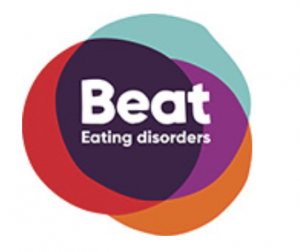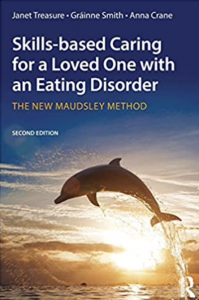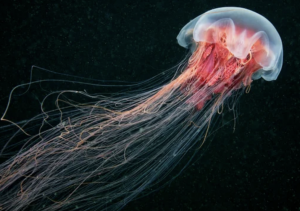Seven hours later I felt somewhat subdued trying to absorb my BEAT Eating Disorders training for healthcare professionals. I was relieved the training was in two parts as I did need some time to reflect on  just how inadequately we manage this condition in society and the healthcare system.
just how inadequately we manage this condition in society and the healthcare system.
Even within my lifetime I know I can safely say that sufferers of eating disorders in the most part, had zero help twenty years ago. And I mean zero. Thankfully, there have been giant progressive steps since then. What we are now realising is that the bigger part of eating disorders has very little to do with food. It is a nuanced spaghetti junction completely unique to the sufferer, who will bear some, but rarely all traits of someone with the same diagnosis standing right next to them. Twas ever thus in all areas of medicine in fact, harping back to the main ethos in medicine of treating the patient, not the condition.
Indeed the features of eating disorders below could easily apply to many patients and many illnesses, or simply the human condition at certain moments in our lives:
- resistant to change
- ambivalent about treatment
- ashamed
- self-deprecating
However the list above does draw upon one common calling for empathy and understanding. This is easy to  request but often so difficult to deliver, especially when the patient is a person we love, when emotion can power our limbs and lips like robots. During my two days of training I was introduced to the concept of
request but often so difficult to deliver, especially when the patient is a person we love, when emotion can power our limbs and lips like robots. During my two days of training I was introduced to the concept of
‘skills-based caring’ and the animal metaphors on the back of work done by Treasure, Smith and Crane. I have in fact just ordered their book!
We were encouraged to be the dolphin (collaborative, guiding) or the St Bernard (calm, warm, nurturing), rather than the less effective animal crew below:
- The Rhino: angry and controlling
- The Terrier: nagging and critical
- The Kangaroo: overprotective
- The Ostrich: avoidant
- The Jellyfish: over-emotional
Yet again, we are reminded not to provide solutions to problems as our default parenting strategy. I suspect the problem solving prowess of the Rhino is unsurpassed, yet ultimately unhelpful. And those hyper-sensitive tentacles are something very much not to be messed with. Who wouldn’t want that jellyfish on their side?
the problem solving prowess of the Rhino is unsurpassed, yet ultimately unhelpful. And those hyper-sensitive tentacles are something very much not to be messed with. Who wouldn’t want that jellyfish on their side?
It is a really uncomfortable thing to get our heads around. But I shan’t begrudge it of interesting. It is extremely interesting, not to mention empowering, evidence based and powerful.
Yet another wonderful bit of training leaving us all with the sense of ‘what is seen cannot be unseen.’
Me and my inner zoo have learnt a little more and it feels good.





 Michelle is an experienced operational and strategic senior manager with 10 years experience in the NHS. She is currently studying an MBA in Strategic Management and recently accomplished the Board Directors Programme. Michelle has an interest in the governance and development of services.
Michelle is an experienced operational and strategic senior manager with 10 years experience in the NHS. She is currently studying an MBA in Strategic Management and recently accomplished the Board Directors Programme. Michelle has an interest in the governance and development of services.
 Kelly is a registered nurse and has had a varied career that has crossed both education and health and usually involved supporting young people. She joined You Before Two in its infancy, initially to support with delivering Workshop around Sexual Health and Contraception as that was her ‘day’ job at the time. She has more recently moved into a Safeguarding Children’s role in nursing and so has become the Safeguarding Lead at the charity. Its great to see how You Before Two has grown in the last 3 years and it’s a pleasure to be part of it.
Kelly is a registered nurse and has had a varied career that has crossed both education and health and usually involved supporting young people. She joined You Before Two in its infancy, initially to support with delivering Workshop around Sexual Health and Contraception as that was her ‘day’ job at the time. She has more recently moved into a Safeguarding Children’s role in nursing and so has become the Safeguarding Lead at the charity. Its great to see how You Before Two has grown in the last 3 years and it’s a pleasure to be part of it. Andrea is from Brazil. She emigrated to England around 15 years ago and she loves it. She has always worked with people in her life, and it is something that really fills her soul. During her early years in Brazil, she used to work as a volunteer in her church providing free soup for people in need and also visiting hospitals trying to cheer up those in need of a chat or a cuddle. She has always believed that we should help each other and now more than ever. We are living in a very busy world where sometimes even when you are surrounded by many people you are still feeling lonely. Therefore she believes that if she could help the next generation to go through life without all the worries and concerns that she had when she was that age, is just an amazing opportunity.
Andrea is from Brazil. She emigrated to England around 15 years ago and she loves it. She has always worked with people in her life, and it is something that really fills her soul. During her early years in Brazil, she used to work as a volunteer in her church providing free soup for people in need and also visiting hospitals trying to cheer up those in need of a chat or a cuddle. She has always believed that we should help each other and now more than ever. We are living in a very busy world where sometimes even when you are surrounded by many people you are still feeling lonely. Therefore she believes that if she could help the next generation to go through life without all the worries and concerns that she had when she was that age, is just an amazing opportunity. Fiona has over 20 years experience as a Solicitor. She is a Senior Partner for a firm in Rotherham. Fiona has an avid interest in education and supporting young people in an increasingly challenging world. She has a wealth of experience of being on charity boards and is You Before Two’s legal and policy expert. Fiona has been with You Before Two since its inception and is a dedicated and dynamic member of the team.
Fiona has over 20 years experience as a Solicitor. She is a Senior Partner for a firm in Rotherham. Fiona has an avid interest in education and supporting young people in an increasingly challenging world. She has a wealth of experience of being on charity boards and is You Before Two’s legal and policy expert. Fiona has been with You Before Two since its inception and is a dedicated and dynamic member of the team. The day you stop learning is the day you stop living.
The day you stop learning is the day you stop living.